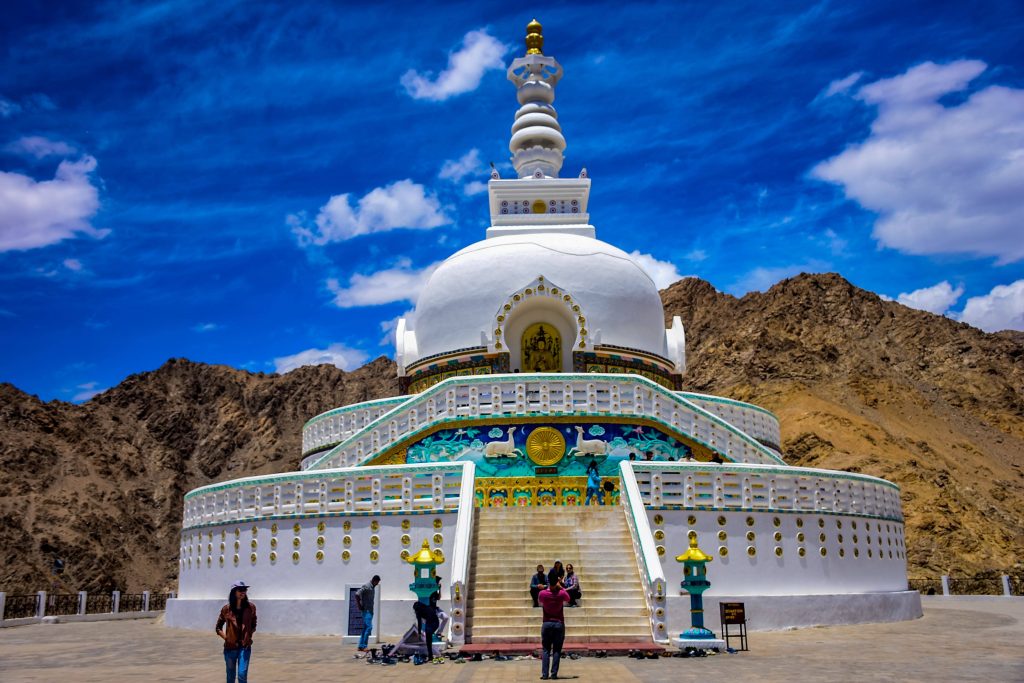
The area of Leh Ladakh has been impacted by the Buddhist and Tibetan culture. The brief look at the equivalent can be reflected in the different religious communities that are dispersed on the place where there is Ladakh. The religious communities are one of the significant vacation destinations of Leh Ladakh. The tranquil and peaceful air of the religious communities draws individuals towards it. The cloisters of Ladakh have verifiable centrality alongside the strict importance. Many individuals visit the few religious communities of Ladakh looking for harmony and isolation.
A portion of the must visit religious communities when arranging an excursion to Ladakh incorporates:
Hemis Monastery
Hemis religious community is one of the greatest and most visited cloisters in the Ladakh district. The religious community was worked in 1630 by the principal manifestation of Stagsang Raspa Nawang Gyatso during the rule of King Singge Namgyal. The Hemis religious community is situated a good ways off of 45 kilometers from the city of Leh. Hemis religious community is overseen and worked by the Drukpa organization of Buddhism. The cloister has a staggering assortment of antiquated relics, copper statues of Lord Buddha, stupas made out of gold and silves, compositions and different articles speaking to the Buddisht culture. The fundamental feature of the cloister is the yearly celebration likewise called the Hemis celebration. The celebration denotes the festival of the birth commemoration of Guru Padmasambhava.
Diskit Monastery
Diskit religious community is perhaps the most established cloister of the Ladakh district. The cloister is situated in the excellent Nubra valley at an elevation of 3142 meters above ocean level. Diskit religious community was worked by a devotee of Tsongkhapa, Changzem Sherab Zangpo in the fourteenth century. One of the particular highlights of the cloister is the delegated buddha statue situated in the supplication lobby. The morning petition meeting of the Diskit cloister is an unquestionable requirement to join in. The environmental factors of the religious community envelopes one in its quietness and tranquil climate. One of the most happening things of the religious community is the Dosmoche celebration which occurs in the long stretch of February.
Spituk Monastery
The spituk cloister was worked by the more seasoned sibling of Lha Lama Changchub, Od-de in the 11 th century. In the present time, the cloister is home to more than many priests alongside the enormous statue of Goddess Kali. The religious community is known for symbols of Buddha alongside the five thangkas. The religious community has a stunning assortment of prank veils and arms alongside old sacred texts and statues. The Spituk religious community has the yearly celebration called as the Spituk or Gustor Festival in the eleventh month as per tibetan schedule. During this celebration just the statue of Goddess Kali is divulged and introduced to the general population for revere. Spituk cloister is situated a good ways off of 8 km from the city of leh and is effectively reachable by street.
Shey Monastery
Shey cloister is home to the biggest Buddha statue in the nation. The statue is made of overlaid copper and is as tall as three accounts of a structure. The religious community is a piece of the shey castle and was utilized as the mid year retreat of the royals. The dividers of the religious community are worshiped with stylish works of art and paintings. It is likewise accepted that the lower church of the religious community houses the biggest assortment of thangkas in the whole district of Ladakh. The religious community holds two celebrations consistently for example Shey Stubla celebration and the Shey Ru-lo celebration. The Rancho school (recently named as Druk Padma Karpo Institute) included in the film 3 simpletons is close by the Shey cloister.
Matho Monastery
Matho religious community is arranged on the banks of waterway Indus a good ways off of 20 kilometers from the city of Leh. The Matho religious community is the main monatery in the locale to follow the Sakya faction of Buddhism. The religious community was established in the year 1410 by Lama Dugpa Dorje. The religious community houses around 60 lamas. The Matho cloister has the Nagrang celebration where appeal move exhibitions and demonstrations of prophet are finished. The dividers of the religious community brag of the delightful and holy compositions and the lobbies and halls of the cloister have statues of Maitreya, Sakyamuni just as the gift Buddha alongside a thousand-equipped statue of Avalokitesvara.
This is about the major and significant religious communities of Ladakh area.
